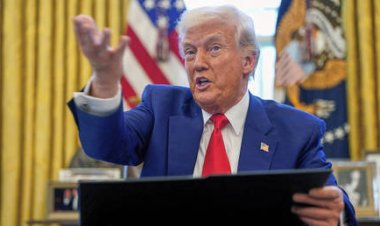U.S. jobless rate rises, bolstering argument for rate cut
The U.S. experienced a rise in the jobless rate in July. Economists believe this development supports the argument for an interest rate cut. Additionally, job growth for the month of July was lower than analysts had expected, as per the data released by the U.S. Labor Department on Friday.

Job growth decelerated in July more than analysts had expected, based on data released Friday from the U.S. Labor Department.
This led to a slight rise in the unemployment rate and triggered concerns about an economic slowdown.
The U.S. economy added just 114,000 non-farm jobs in July, down from 179,000 in the previous month and below economists' forecast of 185,000 jobs.
The unemployment rate rose to 4.3 percent, the highest since October 2021, a period when the economy was still recovering from the COVID-19 pandemic.
"The employment report was surprisingly weak," and reinforced the argument for a near-term rate cut, said Barry Bosworth, economist and senior fellow at the Brookings Institution, in an interview with Xinhua News agency.
When combined with the price report, it could be a decisive factor for the Federal Reserve (Fed), Bosworth added.
Desmond Lachman, a senior fellow at the American Enterprise Institute and a former official at the IMF, indicated to Xinhua that the report suggests the Fed is lagging in its policy response.
It is "difficult to understand" why the Fed has not already initiated an interest rate reduction cycle given the slowing economy, significant progress in curbing inflation, and escalating downside risks to economic recovery, Lachman stated.
"This heightens the chances that by the time that the Fed starts cutting interest rates, it will have waited too long to avoid an economic recession," Lachman remarked.
Dean Baker, a senior economist at the Center for Economic and Policy Research, mentioned to Xinhua that unless there are major surprises, it is likely that the Fed will cut rates in September.
The main question is whether the cut will be 0.25 percentage points or 0.50 percentage points, Baker noted.
The jobs report follows Wednesday's announcement that the Fed might cut rates in September, adding more complexity to the timing and extent of potential rate cuts.
Fed Chair Jerome Powell stated on Wednesday that the labor market is undergoing "ongoing, gradual normalization," allowing officials to wait for clear data on reduced inflation before deciding on rate cuts.
The report was also released after markets experienced a significant decline on Thursday, prompted by data showing an unexpected increase in individuals filing for jobless benefits.
The drop, marked as the worst sell-off of the year, led investors to worry that the central bank might be delaying interest rate reductions for too long.
The jobless report arrives just a few months ahead of the November presidential elections.
"A rising unemployment rate is difficult for an incumbent administration," said Brookings Institution Senior Fellow Darrell West.
"But it is not clear whether this is a one-month development or the start of a new trend," West added.
Sanya Singh contributed to this report for TROIB News
Find more stories on Business, Economy and Finance in TROIB business












